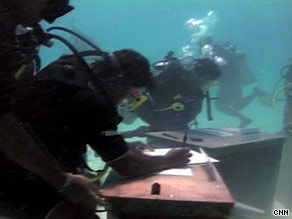There’s a competition in the small town where I grew up called Foodball. It’s an 11 day all-out contest between two high schools to see who can raise the most food and money for local food banks. The contest however, is not just fueled by goodwill, but largely by the rivalry which surrounds the competition. Steeped in over 100 years of competition on the athletic playing fields, our two neighboring one-high school towns are bathed in school pride. When it comes to Foodball that pride feeds a lot of people. I remember in high school, while out on our one-day door-to-door neighborhood blitz, an old-timer asked me (right before he donated some money) whether or not the Bobcats were going to win this year. In this case, raising the most amount of food is a matter of pride. How much food? Historically, enough to run the local food banks for about nine months of the year – quite a feat in 11 days.
Well, it’s Foodball time again and every time I walk into a local store there are high school kids asking for donations and little donation bins on every coffee shop and ice cream store counter. Yesterday, however, I got a glimpse of why we really do this and who it helps.
After a nice lunch with my brother at a downtown cafe we decided to go on an afternoon walk. My brother is a designer and up in the older neighborhoods of my one-high school town, both tucked in corners and standing resolute on the side of the main street, are beautiful old homes. As reminders of our past, I often refer to a group of them as the timber mansions – built by wealthy timber barons in our earlier glory days. Around them are brilliant little craftsman homes and once noble tudors. On our way out of the neighborhoods we passed the local Lutheran church and the high school, right before we reached the museum. On the other side of the road from the museum sits a local food bank. No doubt a recipient of the funds raised by the high school kids just blocks away. Outside of the food bank during the mid-afternoon I saw people stopping by to pick up their nourishments; a mother with a little girl who was holding a doll, parents with a baby seat, older men in logging attire chatting next to their vehicles and a nice-looking young man who drove up in a newer foreign car. On my little architectural walk I was blessed to see the faces of Foodball – the people all of that rivalry and friendly competition actually benefits. Normal people, just trying to make ends meet. I hope my Alma Mater wins this year, but I know that either way it’s those faces that I saw yesterday who really matter.
~ Lana








